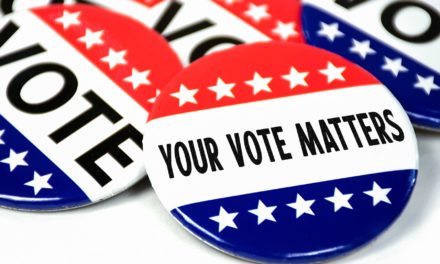There is a discernable level of cynicism built into Memphis’ character as a defense against disappointment, but for now, some level of optimism is not out of the question.
There’s new thinking by a new mayor in City Hall, there’s new rhetoric from Greater Memphis Chamber, and there’s a new well-funded coalition bringing new ideas to address the city’s most intractable challenges dealing with economic mobility.
The question now: it’s encouraging that for the first time in memory, the rhetoric is right, but the real test is whether priorities can be aligned to produce actual progress and whether this alignment can supercharge the trajectory of the city and improve critical economic measurements.
What’s most encouraging is that the reticence to talk about the importance of creating Black wealth is gone. Today, there’s a common theme – if Memphis is to reach its potential, African Americans must reach theirs.
In the 19 years that this blog has existed, there have been 4,414 posts but no subject has received more attention than the need to create better jobs and more wealth for African Americans for Memphis to achieve its potential. Major themes here have been that it is in everyone’s enlightened self-interest to increase African American wealth, to become a hub of African American talent, and to set the closing of the racial income gap as the #1 economic development opportunity.
As I have written often, if the Memphis region can close the racial income gap, it would increase our GDP by $24.7 billion, an increase of roughly 25%. That’s an economic impact that’s roughly more than five times greater than the much-touted Ford Blue Oval project.
Diversity Is Memphis’ Competitive Advantage
From the earliest days of this blog when Mayor Willie W. Herenton was in office until Mayor Paul Young today, the syllogism has been obvious: the city and county are majority African American and the MSA will soon be too; Memphis needs higher per capita incomes and lower poverty rates; therefore, the city’s diversity is key to its success.
And yet, over the years, this fact went largely unspoken, whether mayors were African American or White. That’s why it is refreshing for Mayor Paul Young to correct this tactical error that has held back the city’s growth. After all, if diversity had been seen as an economic advantage before now, the city would have a stronger economic position in an economy whose businesses are focused on diversity and inclusion.
To his credit, Mr. Young has not shrunk in his support for Memphis as a hub of African American talent. The proof for how this works is dramatically seen in the way that Atlanta decades ago stated that it wanted to be the center of African American talent in the South, and in accomplishing this goal that this talent that powered its economy to new heights.
Mayor Young said: “Atlanta is viewed as ‘Black Mecca.’ There are so many opportunities, especially if you’re African American. Memphis is now the largest Black city per capita of any city in the country. I want that designation to be one that we hold with pride and to automatically make you think of strong Black businesses, a strong arts and cultural scene. I want business owners to say, ‘If we want a diverse workforce, if I really mean what I say on my website — that we value diversity — we must be here. This is where that talent is.’”
Memphis’ Opportunity
Actually, it may sound like something only data nerds care about but Memphis is not the largest Black city per capital. What the mayor should have said is it is the largest majority African American city, with his city’s population passing Detroit’s by 680 people. Detroit has been the largest majority Black city for roughly 40 years but the Census Bureau now says Memphis population is 621,056, compared to Detroit’s 620,376.
While the mayor’s fact may be misstated, there’s no mistaking his point. It is that Memphis is at the point where its diversity should be treated as a strong selling point and an untapped economic advantage. To treat it otherwise is tantamount to shooting ourselves in the foot.
Here’s the thing: there are indeed many other cities that have greater percentages of Black population but what makes Memphis different is that the county in which it sits is also majority African American, and in a few years, the Memphis MSA’s 11 counties will become the first in U.S. history that is majority Black with more than one million people. The MSA is already majority non-white and the percentage of Black population is 47.3%.
In a blog post, “Memphis’ potential is about Black Memphians reaching Theirs,” that ushered in 2023, I asked: “Can you remember when a political or business leader discussed how Memphis’ African American majority is a competitive advantage? Can you remember when a political or business leader advanced a vision of Memphis as a hub of African American talent?”
Finally, the answer to both questions is yes.
Chamber Gets Its Rhetoric Right
Mayor Young has responded to my challenge, becoming the first mayor to articulate that the Black majority is a competitive advantage. Meanwhile, for the first time in its history, the Chamber saying the same. As Greater Memphis Chamber Chief Economic Development Officer Gwyn Fisher proclaims bluntly: “Diversity is our superpower.”
This may now all seem obvious but it’s a message that the business group has been reluctant to deliver at any time in Memphis’ modern history. More often, while Memphis faced debilitating poverty and a high percentage of the working poor, the Chamber quietly sold Memphis on the basis of the cheapness of its majority population workers, as it had done for more than a century when it said “our advantage is the Negro” as I explained in a blog post seven years ago: “The injustice of a Memphis economy built on low-wage jobs.”
The fact that the Chamber’s economic development officer now touts diversity and the importance of Memphis attracting higher-paying jobs with salaries closer to $75,000 and the objective is for at least half of these jobs to be filled by African Americans is a major step forward in a city where 42% of its African American workers earn less than $15 an hour.
To send the message that it was a new day at the Chamber, in 2021, it announced with fanfare its new data-based People Powered Prosperity Benchmark. It was to feature key data in an innovative data dashboard. The link to that Center now produces an 404 error message. The dashboard was never easy to find on the Chamber website and maybe it still exists somewhere in its depths of it somewhere. The bracing report backing up the dashboard, MemMeasures, can still be found here.
On the dashboard, the Chamber ranked the Memphis region against Nashville, Louisville, Kansas City, Indianapolis, St. Louis, Birmingham, Milwaukee, Oklahoma City, and New Orleans, and the results demonstrated the urgency that was needed to increase African American wealth. In the rankings, Memphis finished at the bottom of key measurements – Shared Prosperity – #9 out of 10; Inclusive Economic Growth – #9; Job Accessibility – #10; Economic Stability – #10; Per Capita GDP – #10; Bachelor’s Degreed – #10; and Median Household Income – #9
Converting Rhetoric Into Results
In other words, the encouraging rhetoric aside, the proof will be in how City Hall and the Chamber converts its rhetoric into results. One immediate way they can do that it is to embrace wholeheartedly the ambitious plan of action developed by the More for Memphis process.
This broad coalition of local organizations and neighborhood leaders has issued a 65-page “Strategic Plan Report.” After establishing a structured process to gather information, listen to community members, to test ideas, and to fine tune strategies, the report represents the most thorough – and comprehensive – plan developed in Memphis in decades.
What makes it different at its core is its focus on ultimate objective of creating Black wealth and how it talks straight about Memphis’ debilitating racial disparities. With the plan’s launch, its backers acknowledge that it will take generations to achieve its ultimate goals but it sets out a five-year first phase costing $1.4 billion that is within our grasp: 10,000 additional young people on a path to economic mobility; a thriving community measured by its progress on affordable housing, access to and use of arts amenities, connections to employment, success of local business, decreasing recidivism, violent crime rates, and families living in poverty; and pathways for more than 24,000 Memphians in focus schools and neighborhoods.
Transforming The System
As the adage says, every system is perfectly designed to produce the results it does. Today’s system produces high rates of poverty, immoral levels of child poverty, low incomes, and more.
The More for Memphis strategic plan is a historic opportunity for us to transform the system as a result of its perfectly designed plan to attack problems that have tormented Memphis for generations.
The change in systems comes from the more than 30 “evidence-informed strategies that address problems identified by residents and built on existing community assets.” To learn more, read this excellent summary by The Institute for Public Service Reporting’s David Waters.
The idiom that talk is cheap is often proven by things we see every day. The Young Administration at City Hall and the Greater Memphis Chamber leadership have a rare opportunity to transform their rhetoric into results.
To do that, they should sign on as major partners for the More for Memphis agenda, and become part of the broad-based, cross-sector coalition of change makers that its success hinges on. Without their dedicated help, the success of More For Memphis will be limited and it will prove yet again that the undercurrent of cynicism that exists in Memphis is deserved.
**
Join us at the Smart City Memphis Facebook page and on Instagram where these blog posts are published along with occasional articles, reports, and commentaries that are relevant to Memphis.





